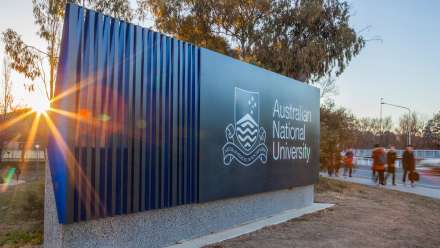New understanding of dark energy could reshape our knowledge of the universe
The most detailed measurement of dark energy to date could reshape our understanding of how quickly the universe is expanding, according to new research from an international team of scientists including astronomers from The Australian National University (ANU) and The University of Queensland.
According to the researchers, dark energy – a mysterious entity responsible for causing the acceleration of the universe – may be more complex than previously thought. Dark energy makes up about 70 per cent of the universe, yet scientists still don’t understand what it is.
“Our findings hint that the density of dark energy may change with time, which if confirmed would be revolutionary,” PhD student Patrick Armstrong, from the ANU Research School of Astronomy and Astrophysics, said.
Dr Brad Tucker, also from ANU, said: “A dark energy that evolves with time would represent a huge change in our understanding of dark energy, and one that frankly is just weird.”
The scientists sifted through data of about two million distant galaxies to identify and classify an “unprecedented” sample of almost 1,500 supernovae – a phenomenon where stars reach the end of their life cycle and die bright, explosive deaths.
Many of these supernovae are so far away from us that the light astronomers can observe through telescopes was emitted before the Earth even formed.
The team used this supernova data to develop a new technique to help unravel the complex nature of dark energy.
“Never before have so many distant supernovae been observed and analysed – we’re at the tip of the iceberg and it’s truly an exciting time,” Mr Armstrong said.
“The nature of dark energy is still out there to be discovered – this new method will help future generations of stargazers to explore its mysteries.”
The researchers looked at a specific kind of supernovae known as type la. These supernovae occur when an extremely dense dead star, known as a white dwarf, reaches a critical mass and explodes. This new method uses machine learning to classify types of supernovae explosions based on their colours.
Dr Georgie Taylor from ANU, who was also involved in the research, said: “All type Ia supernovae have about the same actual brightness. So when we measure the brightness of two of these supernovas as seen from Earth, we can then calculate their distance from us – shedding light on the mystery of how quickly our universe is expanding.”
In 1998, a team of scientists, including former ANU Vice-Chancellor Professor Brian Schmidt, discovered the universe is expanding at an accelerating rate. They attributed this acceleration to dark energy.
The ground-breaking discovery saw Professor Schmidt and colleagues awarded the Nobel Prize in Physics in 2011.
“For comparison, 1998 Nobel-winning astronomers used just 52 supernovae to determine that the universe is expanding at an accelerating rate,” Professor Tamara Davis, from The University of Queensland, said.
“It’s really a massive scale-up from 25 years ago and gives us a fascinating insight into one of astrophysics’ most enduring questions.”
The research, which has been conducted as part of the Dark Energy Survey (DES), is a culmination of almost 10 years of work.
The international research team say their new technique will help improve future astrophysical projects, in addition to bringing scientists a step closer to understanding what dark energy is and its mysterious origins.
“This new supernova result is exciting because this means we can really tie a bow on it and hand it out to the community and say, ‘this is our best attempt at explaining how the universe is working’,” Rich Kron, DES Director and a scientist from the University of Chicago, said.
“These constraints will now be the gold standard in supernova cosmology for quite some time.”
The DES is an international collaboration comprising more than 400 scientists from over 25 institutions. It is spearheaded by the US Department of Energy’s Fermi National Accelerator Laboratory.
The findings are published on the Cornell University website.
For Journalists
- MEDIA TEAM CONTACTGeorge Booth+61 2 6125 7979


